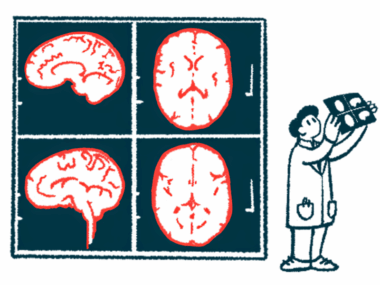Retinal Thinning in Eyes Linked to Worse Restless Legs Syndrome in MS
Changes in retinal layers in eye may be key to mechanisms underlying RLS
Written by |

Worse disability scores in multiple sclerosis (MS) patients with restless legs syndrome (RLS) were significantly associated with the thinning of a retinal layer in the eye in a new study.
Overall, the study found that people with MS who experience RLS exhibit more severe disability than those who do not have this common MS symptom.
Researchers pointed to the thinning of a retinal layer called the macular ganglion cell-inner plexiform layer (MGCIPL) as possibly playing a role in restless leg syndrome, commonly referred to as RLS. Another eye layer, the peripapillary retinal fiber layer (pRNFL), also was found to be significantly thinner in MS patients with and without RLS.
Together, these changes in retinal layers may help unravel the neurodegenerative mechanisms linked with restless leg syndrome in people with MS, the scientists said.
“Changes in the retinal fiber layer may be remarkable in MS patients presenting with RLS,” the team wrote.
Changes in retina linked to worse RLS
The study, “Restless legs syndrome in multiple sclerosis is related to retinal thinning,” was published in Photodiagnosis and Photodynamic Therapy.
RLS is a neurological disorder in which patients have an uncontrollable urge to move, often tied to an unpleasant sensation in the legs or feet. This urge typically occurs in the evening or nighttime hours, when people are more inactive. It usually can be temporarily eased with movement.
However, if left untreated, RLS can affect sleep and cause fatigue.
Restless legs are a common symptom of MS, occurring in about 13–65% of people with the disease, as compared with a prevalence of 0.25-15% in the general population.
Retinal thinning, or a decrease in the volume of the retina — a layer of light-sensitive nerve cells found at the back of the eye, which plays a vital role in vision — is an established method to non-invasively detect neurodegeneration in the brain.
It is believed that the loss of nerve cells in the retina, evidenced by a thinning of this layer, essentially mirrors what is happening in the brain. As such, retinal thinning provides a window to track neurodegeneration in the brain and evaluate the impact of MS treatments.
Notably, recent studies have suggested that people with RLS also experience retinal changes, which could provide clues to the neuronal mechanisms that underlie this syndrome in MS patients.
“Mechanisms to explain the coexistence of RLS and MS are still not fully demonstrated,” the researchers noted. They hypothesized that changes in the retina could be significant in patients with restless legs.
To learn more, the Turkey-based team compared the thickness of certain retinal layers in MS patients with and without RLS. They also investigated a possible relationship between the syndrome and sleepiness, fatigue, and MS disability scores.
The analyses included 75 patients with relapsing-remitting multiple sclerosis (RRMS) followed at a Turkish hospital from January to April 2022. All had been diagnosed at least one year before the assessment, and most (64%) were women. Their mean age was around 38, and they’d had MS for an average of eight years.
Among the patients, 20 were also diagnosed with RLS. They had been living with it for an average of 5.8 years and had scores of 25.7 in the International Restless Legs Syndrome Study Group scale — in which scores of 21 to 30 are considered severe.
Participants with and without RLS were fairly similar in terms of sex, age, disease duration, and relapse rates. But those with the syndrome had higher scores on validated measures of fatigue and excessive sleepiness. They also had higher Expanded Disability Status Scale (EDDS) scores, indicating more severe disability.
Focusing on 2 layers
Using optical coherence tomography (OCT), a non-invasive imaging tool that acquires detailed pictures of the retina, the researchers examined two specific eye layers. One was the pRNFL and the other the MGCIPL, a that layer contains nerve cell dendrites, or the branched extensions of nerve cells.
Results showed that patients with RLS had a significantly thinner pRNFL, but only in the inferior quadrant of this layer, than patients without RLS. The mean was 104.5 versus 114.2 micrometers.
There was no difference in MGCIPL thickness between the groups. However, in patients with restless legs, a thinner MGCIPL was linked to more advanced disability, as assessed with EDSS scores.
This association between a thinner MGCIPL with greater EDSS scores is thus far “novel, and there has not been any study showing this relationship,” the researchers wrote.
No other associations were found between retinal thickness and fatigue or sleepiness.
The findings may indicate that “following MS patients with OCT can help us get additional information on the neurodegenerative process in the retinal layers compatible with RLS,” the team wrote.
The scientists noted several limitations in their study, such as the inclusion of RRMS patients only, and the small number of participants. They also noted the lack of a healthy control group.
Thus, more and larger studies are needed to understand the processes that could lead to restless leg syndrome in MS patients, they said.






